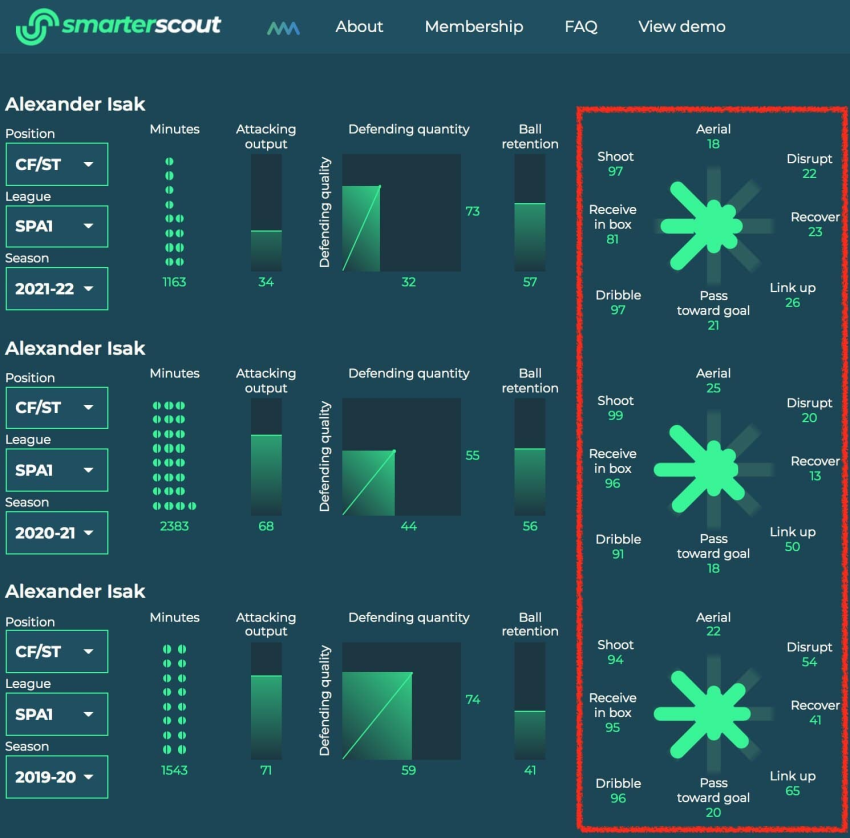Football analytics has emerged as a pivotal element in the world of sports, fundamentally changing how teams assess performance and devise strategies. In an era where data-driven football is becoming the norm, the integration of advanced football statistics into team operations is transforming the beautiful game. With the rise of AI in football, coaches and analysts can now harness comprehensive performance analysis to make informed tactical decisions, thus elevating the overall quality of the game. This post delves into the revolutionary impact of football analytics, revealing how the interplay of data and strategy enhances player performance and team success. As we move forward, understanding the nuances of football analytics becomes essential for anyone wishing to grasp the future of the sport.
The analytical approach to football provides a fascinating lens through which to explore the intricacies of the game. Often referred to as performance metrics, this systematic evaluation allows coaches and clubs to glean crucial insights from every match. Data-driven strategies, focused on enhancing overall gameplay, are now essential tools for teams aiming for success. Furthermore, harnessing modern AI technologies opens new avenues for understanding player dynamics and team interactions on the field. As the landscape of football evolves, the utilization of statistical data and analytics is set to become increasingly critical, shaping not just individual teams but the sport as a whole.
The Role of Football Analytics in Data-Driven Strategies
Football analytics has swiftly transitioned from a niche tool to an indispensable element of modern football strategy. With its focus on statistical data, teams can analyze players’ historical performance and predict future outcomes, harnessing insights that influence coaching decisions. By examining metrics such as expected goals (xG) and player efficiency ratings, coaches and analysts can devise game plans that are strategically sound, enabling teams to maximize their strengths while exploiting opponents’ weaknesses. Besides performance metrics, football analytics provides advantages not just during games, but also in the recruitment phase, as clubs now prioritize data-driven approaches to identify promising talent.
Moreover, the integration of AI in football further enhances the capabilities of analytics, allowing for a deeper analysis of player behavior and tactical efficiency. Coaches can now access advanced visualizations of player movements, helping them to implement specific drills aimed at addressing inefficiencies. This data-driven emphasis promotes a culture of accountability and continuous improvement within teams, where each player’s contribution is meticulously tracked and assessed. Consequently, the evolution of football analytics plays a critical role in creating a winning football strategy that is flexible, responsive, and optimized for both performance and results.
Future Trends in Football Analytics: Embracing Technology and Innovation
As the landscape of football continues to evolve, the future of analytics is set to embrace even more sophisticated technologies. With the proliferation of wearable tech and Internet of Things (IoT) devices, real-time data collection during matches is becoming more common. This integration not only allows for on-the-fly tactical adjustments but also yields comprehensive post-match analyses that can help in refining future practices. Teams that leverage these advancements will position themselves to gain significant strategic advantages over their competitors. In this environment, performance analysis transcends traditional methods, facilitating a deeper understanding of not just player output, but the overall dynamics of the game.
Additionally, the increasing collaboration between football clubs and tech companies signifies a paradigm shift that prioritizes data utilization in both practice and match scenarios. As investment in analytics rises, we can anticipate the emergence of new methodologies to evaluate football statistics, such as utilizing machine learning algorithms to predict player injury risks based on extensive datasets. This proactive approach to player management and strategy formulation will allow clubs to maintain peak performance levels while minimizing downtime due to injuries. Ultimately, as innovation in football analytics continues to grow, the sport is likely to witness a newfound synergy between technology and athletic performance, setting the stage for a more strategic and informed future.
Frequently Asked Questions
How is football analytics changing player performance evaluation?
Football analytics is revolutionizing player performance evaluation through advanced metrics and data-driven insights. Unlike traditional methods that focus solely on goals and assists, modern analytics captures detailed player movements, stamina, and psychological factors affecting performance. By utilizing AI and real-time data analysis, teams can make informed decisions on training regimens and in-game strategies, ultimately enhancing players’ overall performance.
What role does data-driven football play in tactical decision-making during matches?
Data-driven football significantly influences tactical decision-making by providing coaches with empirical evidence to adjust strategies in real-time. Analytics allows teams to analyze opponents’ gameplay patterns and identify weaknesses, enabling tailored tactical adjustments during matches. As teams increasingly integrate performance analysis with traditional football strategies, the blend of data insights and coaching intuition becomes essential for competitive advantage.
| Key Points | Description |
|---|---|
| Introduction to Football Analytics | Analytics is transforming the sport, enhancing decision-making and player performance evaluations. |
| The Evolution of Football Analytics | Technology has shifted analysis from subjective to empirical, collecting real-time data to inform strategies. |
| Enhanced Performance Metrics | Analytics now tracks detailed performance metrics, factoring in movements, stamina, and psychological elements. |
| Tactical Advantages | Teams use analytics to exploit opponent weaknesses, blending coach intuition with data. |
| Bridging the Gap in College Football | There is a disparity between college and professional programs in the use of advanced analytics. |
| The Future of Football Analytics | Increased investment in analytics technology is anticipated, enhancing competitive advantage. |
Summary
Football analytics is revolutionizing the sport, driving teams to make informed decisions based on precise data insights. The transformation seen over the years illustrates a move from traditional anecdotal evaluations to sophisticated metrics that assess every aspect of a player’s performance. Expect to see a fundamental evolution in how teams strategize, incorporating real-time analytics into match play, which will ultimately redefine training and recruitment methods in football. As teams increasingly leverage technology, the integration of analytics promises to elevate gameplay and unveil new competitive edges within football leagues worldwide.
